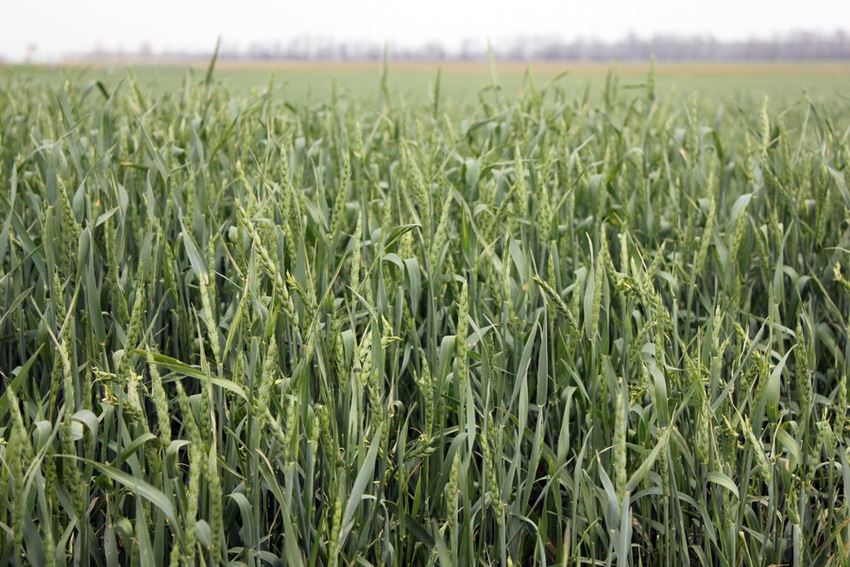
On Jan. 30, stripe rust was found in Mississippi’s Bolivar County, usually one of the state’s top wheat counties. The discovery followed a similar find in northeast Arkansas, days earlier.
These are the first incidents of stripe rust west of the Rockies in 2012.
“That’s the earliest we’ve ever seen stripe rust,” says Erick Larson, Mississippi State University wheat specialist. Most of the varieties grown in Mississippi are resistant to the fungal disease. “But stripe rust is a cool weather disease and the growing conditions lately are quite conducive to its development.”
A report authored by Tom Allen, Mississippi State University Extension plant pathologist, says stripe rust development “is typically favored by an environment with temperatures between 50 and 65 (degrees), heavy dews, and intermittent rain showers. In addition, development of the disease can occur above 70 (degrees).”
For Allen’s full report, see here.
For a report on the Arkansas find, see here.
Generally speaking, reports Allen, the Mississippi stripe rust find “is several months earlier than what could be considered a ‘typical’ timing. However, with the mild winter temperatures we’ve encountered and the frequent rainfall finding stripe rust is not unexpected.”
For more on mild winter wheat diseases, see here.
While stripe rust hasn’t reached North Carolina, powdery mildew certainly has. “We’re seeing very unusual and heavy powdery mildew pressure building in susceptible varieties,” says Randy Weisz, NC State University professor and North Carolina small grain Extension specialist. “That’s due to all the warm weather. The same conditions that have been pushing the wheat are ideal for powdery mildew.
“I’ve been telling growers this is likely to be the ‘year of powdery mildew hell.’ They need to be looking for it as soon as they top-dress.”
Leaf rust in North Carolina is “at the level that plant pathologists are finding it. That means it isn’t yet agronomically important yet – but it’s a warning that there is enough inoculum available that we could see a lot of it later in the season.”
Considering the warm winter, Steve Harrison, LSU AgCenter small grains specialist, is “sure we’ll have rust problems this spring. That’s a given with this weather. There’s been rain in south and east Texas so that’ll help rust get into the wheat and wild oats. They’ll be sending spores this way.”
If you do see rust this early, should a fungicide be applied?
“I’d probably wait and see,” says Harrison, who cautions growers to know their varieties. Are they “susceptible or resistant in the past? What is the predicted weather pattern for the next several weeks?”
The good news is there are many good, relatively inexpensive, fungicides available.
“With wheat prices still in the $6.50 range, I’d be quicker to apply a fungicide if I thought a problem was emerging,” says Harrison. “However, growers do not need to spray just because they heard there was some rust in the region. They need to know it’s in their field, need to know the variety has some susceptibility, and need to know the weather pattern is conducive for disease development.�”
Allen says a fungicide application is unnecessary at this point and growers should consider several things prior to making an application. “Generally speaking, wheat is more susceptible to rust diseases at early growth stages and will become more tolerant of the fungus as the plant ages.”
Still, says Allen, it is important to determine:
The specific wheat variety planted in each field.
Determine the rating for stripe rust and other important yield-limiting diseases.
“If a particular variety is labeled as moderately resistant or resistant than monitoring for the disease will likely be more economical than simply making a labeled fungicide application.”
Regarding stripe rust scouting, Allen says “there are two common rust diseases in the Mississippi production system. Leaf rust produces a sporulating pustule more orange in color and likely will be present on the leaf in a more random, scattered pattern. Stripe rust will produce pustules with a defined pattern in rows of pustules and the sporulating pustules will be more yellow in color when compared to leaf rust.”
For a full report on other threats facing the wheat crop, see here.
About the Author(s)
You May Also Like




